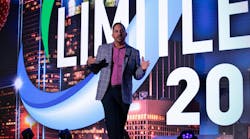VIEWPOINT: A New Era for Dealer-Run Shops?
Here’s the common assumption: Across the industry, the presence of dealership-owned and-operated collision repair facilities has diminished.
And, in part, that’s true: According to data from the National Automobile Dealers Association (NADA), the total number of dealer-run shops has decreased roughly 26 percent from 2006 through the end of 2014.
But so too has the number of total dealerships—by nearly an identical percentage.
Analyzing the NADA’s data, roughly 37 percent of dealerships in 2007 operated a collision repair shop. That
number was 39 percent at the
end of 2014. On top of that, total revenue for dealer-run shops, nationwide, has increased each of the last four years, reaching $7.5 billion in 2014 after bottoming out with $6.4 billion in 2010.
So, that assumption? Throw away the numbers, and Fred Beans, founder and owner of Fred Beans Family of Dealerships in the Philadelphia area, says his business is anecdotal proof to the contrary.
“I’m not exactly sure why anyone would say this is a model that’s going away,” he says. “[Collision repair] is a great business, and we’re focused on it.”
So focused, in fact, that Beans has opted to reinvest in his five facility, $20-million-per-year collision repair segment, having joined the CARSTAR Auto Body Repair Experts network in September.
Beans, whose company encompasses 17 dealership sites and 1,650 employees, shared his thoughts on a possible resurgence of the dealer-run model.
To start, why are body shops still a viable business?
Well, it’s a great business to be in. Unless there’s something I don’t know, it’s still a great business.
Look at the [auto] sales side: You have the inventory issue; if there’s a certain model that’s important to sell, you have to fight for that inventory for your dealership. There are so many factors in the auto dealer side: new cars, old cars, accounting department, etc. Economic downturns, like the one we recently had, can be catastrophic on this side of the business. There are a lot of moving pieces and it’s very complicated.
Despite the challenges in collision repair, it’s a more straightforward business. From my perspective, it’s containable—everyone on site in one place. The margins— they’re there on the collision side, unlike in sales—and it gives us that opportunity to create those relationships with customers for our entire business.
Why did you feel the need to make new investments in your collision segment?
Think back to 20 years ago, and you’d buy a dealership and it’d have a small body shop in the back—maybe five people working in it. It was such a simple business then.
Today? It’s very complex. We have measuring systems from the insurers and tools to track progress and efficiency, and just on the management side, it’s a much more complicated business.
From that standpoint, working in the retail auto business, I’m not sure we had the expertise to run this in the way we needed to. We needed someone to guide us.
Maybe it’s my military background, but I really believe in structure, and with joining CARSTAR, it ensures that structure is there. With having this partnership, it’s like going up to a buffet and being able to pick up what we want or need. We feel we’re going to get a lot better and add more structure and processes. This isn’t the same business it used to be, and we can’t operate the same way.
What do you see as the future for your dealer-run business?
This is a family business on first generation money. I started out in a two-bay gas station in 1959 with two employees. I got my first dealership on my own in 1975, and we’ve just grown from there. When you have second-generation money, you have better footing. When you start from nothing it takes longer and it’s a harder journey. But we’ve had great growth, and I’m extremely proud of everything we’ve done.
That’s why we don’t sit back and just let the business keep going in the way it has. We’re not satisfied and we’re going to do everything we can to keep improving. That’s why we’re investing in collision, and that’s why we’re going to continue to do so.
I’m very fortunate to have done what I’ve done. I don’t forget that. I don’t forget growing up on a farm and watching the hard work my mother and father put in every day. And I want to pass this along to my family and future generations.
This is a great business to be in, collision repair. That’s the way we see it, and we’re going to keep taking every opportunity we can to make it even better.




